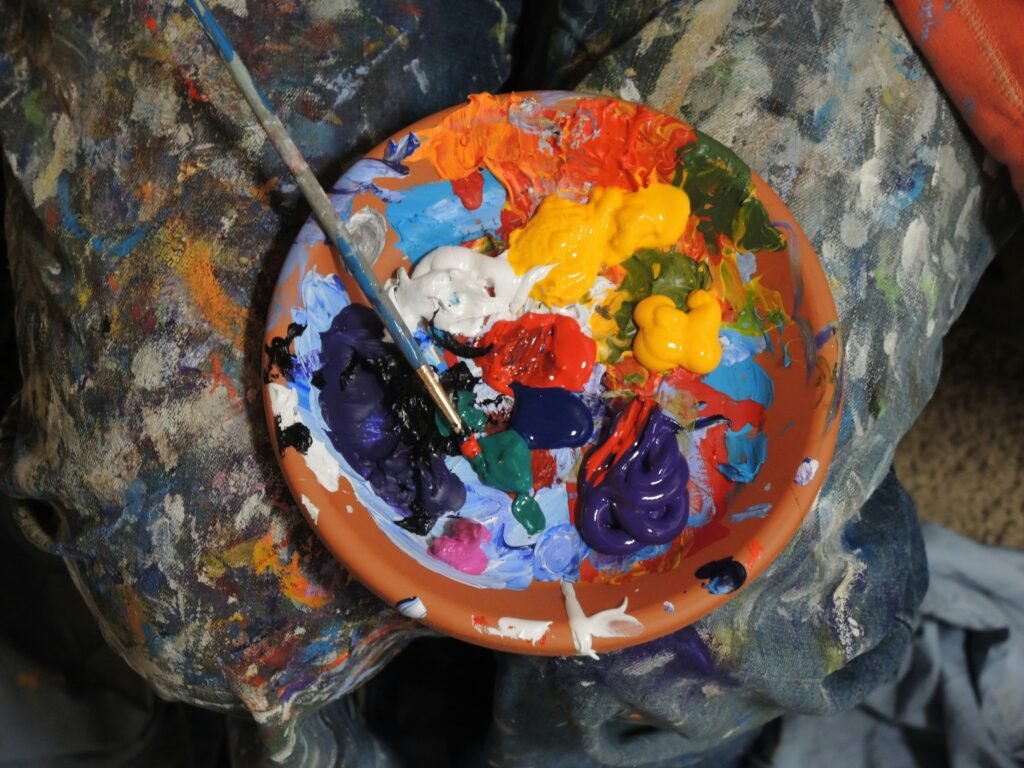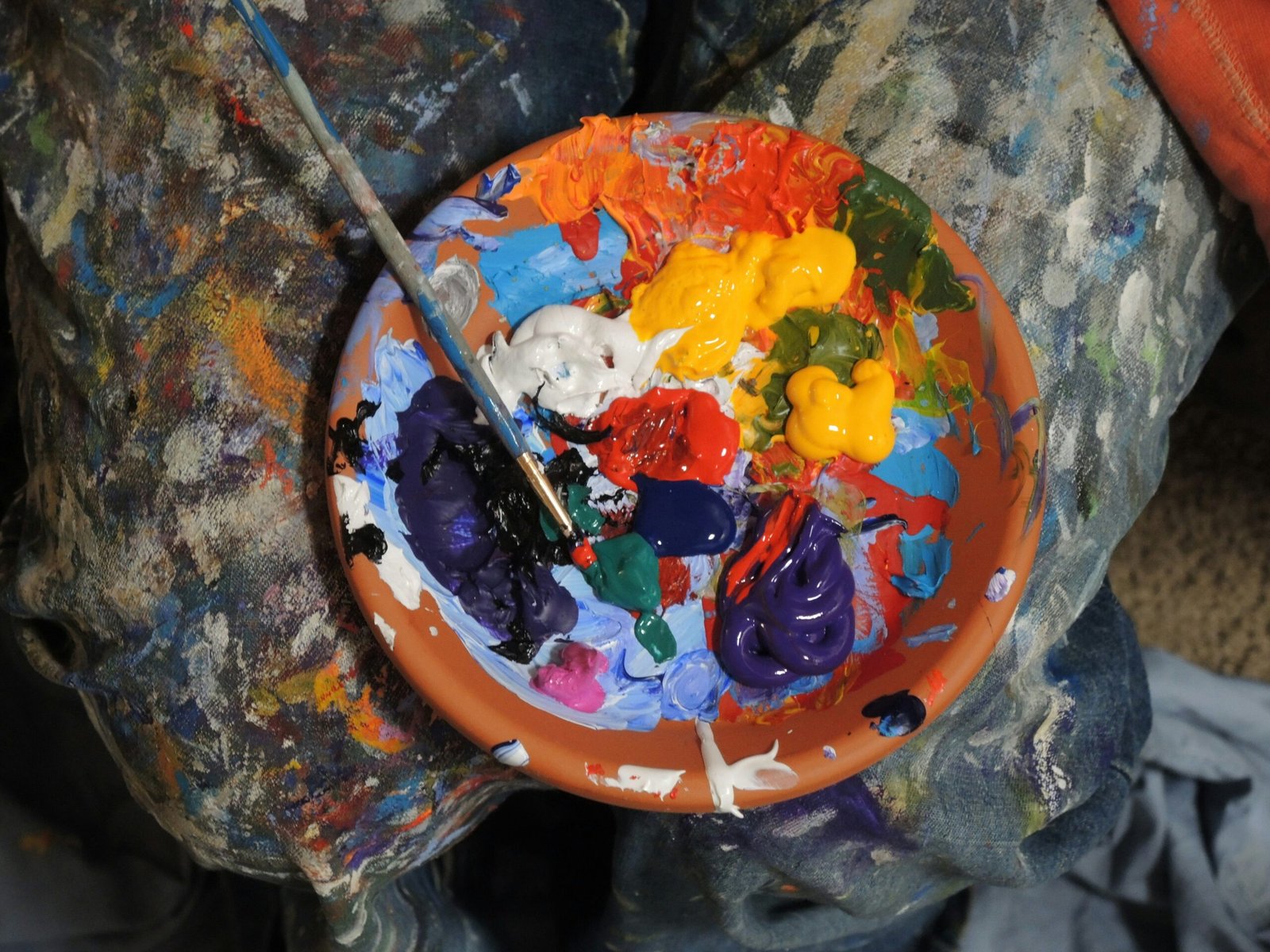Imagine a world where old meets new, where craftsmanship from the past merges seamlessly with contemporary styles. In this captivating article, you will explore the fascinating fusion of traditional craftsmanship and modern aesthetics. Discover how artisans are redefining the boundaries of design, creating unique pieces that embody the perfect blend of history and innovation. Step into a realm where ancient techniques are infused with modern sensibilities, resulting in stunning creations that are both timeless and cutting-edge. Embark on a journey where tradition and modernity intertwine to bring forth a new era of design and creativity.

This image is property of images.unsplash.com.
Traditional Craftsmanship
The significance and value of traditional craftsmanship
Traditional craftsmanship holds a special place in our world, representing the rich cultural heritage and expertise passed down through generations. It embodies the artistry and skills that have stood the test of time, offering a sense of authenticity and connection to our past. Traditional craftsmanship is not just about creating beautiful and functional objects; it is about preserving traditions, stories, and values that are deeply ingrained in our societies.
Preserving traditional craftsmanship in a modern world
In today’s fast-paced and ever-changing world, traditional craftsmanship faces numerous challenges. Industrialization and globalization have led to mass production and a shift towards efficiency and profitability. However, the value of traditional craftsmanship should not be forgotten or overshadowed. It is crucial to preserve and protect these artisanal skills, as they enrich our cultural diversity and heritage.
The skills and techniques passed down through generations
Traditional craftsmanship encompasses a wide range of skills and techniques that have been perfected over centuries. From intricate woodcarving to delicate embroidery, each craft requires a deep understanding of materials, tools, and methods. The knowledge and expertise are usually passed down from one generation to the next, creating a strong sense of continuity and connection. These skills and techniques create a foundation for creativity and innovation in modern design.
Examples of traditional craftsmanship in various cultures
Traditional craftsmanship can be found in every corner of the world, each with its own unique style and heritage. For example, Japanese artisans are renowned for their mastery of the tea ceremony, ceramics, and kimono-making. Indian artisans excel in intricate handwoven textiles, such as silk sarees and Kashmiri shawls. African craftsmanship is celebrated for its vibrant tribal art, beadwork, and basket weaving. These examples showcase the diversity and beauty of traditional craftsmanship across cultures.
Modern Style
Defining modern style in design and fashion
Modern style is characterized by its simplicity, minimalism, and emphasis on functionality. It is a departure from the ornate and elaborate designs of the past, embracing clean lines, sleek forms, and a sense of space. Modern design aims to create a harmonious balance between aesthetics and practicality, with an emphasis on innovation and cutting-edge materials.
The influence of technology on modern style
Technology has played a significant role in shaping modern style. Advancements in materials and production techniques have opened up new possibilities for designers to experiment and push boundaries. From 3D printing to smart fabrics, technology has allowed for greater customization and efficiency in the design process. It has also facilitated the integration of technology into everyday objects, blurring the lines between function and style.
Embracing simplicity and minimalism
One of the core principles of modern style is simplicity. Minimalism is embraced to eliminate any unnecessary embellishments and to create a sense of calm and order. Clean lines, neutral colors, and open spaces are commonly found in modern interiors and fashion. By stripping away the excess, modern style allows for a focus on essential elements and their inherent beauty.
The role of innovation in modern style
Innovation is a driving force behind modern style. Designers continuously seek new ways to push the boundaries of creativity and functionality. They experiment with unconventional materials, reimagine traditional techniques, and embrace sustainable practices. Innovation not only enhances the aesthetic appeal of modern designs but also ensures their relevance and adaptability in a rapidly changing world.

This image is property of images.unsplash.com.
The Need for Balance
Recognizing the gap between traditional craftsmanship and modern style
As traditional craftsmanship and modern style continue to evolve separately, a gap has emerged between the two. Traditional craftsmanship tends to be associated with the past, while modern style is often seen as forward-thinking and futuristic. However, this gap overlooks the potential for synergy and harmony between the two. Recognizing and bridging this gap is essential to create a balanced and inclusive approach to design and fashion.
Finding ways to bridge the gap and create harmony
Bridging the gap between traditional craftsmanship and modern style requires a conscious effort and an open-minded approach. It involves acknowledging the value and relevance of both approaches and seeking opportunities for collaboration and integration. By embracing the best of both worlds, designers and artisans can create truly unique and meaningful products that resonate with a broader audience.
Why the blend of traditional craftsmanship and modern style is desirable
The blend of traditional craftsmanship and modern style offers numerous benefits. It allows for the preservation and celebration of cultural heritage, while also embracing contemporary aesthetics and functionality. The combination of traditional techniques with modern materials and technologies creates a dynamic and exciting fusion that appeals to a wide range of tastes and sensibilities. Moreover, the blend ensures the continuity and evolution of craftsmanship, ensuring its survival and relevance in the modern world.
Showcasing Traditional Craftsmanship in Modern Designs
Incorporating traditional techniques into contemporary products
One way to showcase traditional craftsmanship in modern designs is by incorporating traditional techniques into contemporary products. For example, a furniture designer may incorporate traditional joinery techniques in a modern chair design. This not only adds a unique and handcrafted touch to the product but also pays homage to the craftsmanship of the past.
Highlighting the craftsmanship through unique details
Another approach is to highlight the craftsmanship through unique details and finishes. For instance, a fashion designer might use intricate embroidery or hand-stitched embellishments to showcase the skill and artistry that goes into their creations. These details become a focal point and create a visual narrative that connects the past with the present.
Combining traditional materials with modern elements
The combination of traditional materials with modern elements is a powerful way to create compelling and visually striking designs. For example, a jewelry designer may incorporate traditional gemstones into a modern, minimalist setting. This juxtaposition of old and new creates an interesting contrast that captures the essence of both traditional craftsmanship and modern design.
Examples of successful products that fuse traditional craftsmanship and modern style
There are numerous examples of successful products that successfully fuse traditional craftsmanship and modern style. One such example is Muji, a Japanese brand known for its minimalist and functional products. Muji’s furniture and home goods often incorporate traditional Japanese woodworking techniques while embracing contemporary design principles. Another example is the work of Studio Gorm, a design studio that combines traditional craft and sustainable practices in their furniture designs.

This image is property of images.unsplash.com.
The Influence of Traditional Craftsmanship on Modern Aesthetics
How traditional craftsmanship inspires modern design
Traditional craftsmanship serves as a rich source of inspiration for modern design aesthetics. From the intricate patterns of Moroccan tiles to the delicate art of Chinese paper cutting, the beauty and craftsmanship of traditional techniques can be seen in contemporary designs. By drawing from these traditions, designers are able to create products that are not only visually stunning but also steeped in cultural significance and authenticity.
The blending of cultural heritage with contemporary aesthetics
When traditional craftsmanship influences modern aesthetics, it creates a harmonious blend of cultural heritage and contemporary sensibilities. This blending allows for the creation of unique and meaningful designs that resonate with people on a deeper level. The incorporation of traditional motifs, patterns, and materials into modern creations adds depth, richness, and a sense of connection to our cultural roots.
The appeal of authenticity in a mass-produced world
In a world dominated by mass-produced goods, there is a growing desire for authenticity and individuality. Traditional craftsmanship offers an antidote to the uniformity and impersonality of mass production. Handcrafted products carry a sense of authenticity, uniqueness, and a connection to the artisan who created them. This appeal of authenticity has led to a resurgence in the appreciation and demand for traditional craftsmanship in modern aesthetics.
Using traditional motifs and patterns in modern creations
Traditional motifs and patterns have found their way into contemporary designs, adding a touch of tradition and cultural significance. These motifs and patterns can be seen in various forms, such as textiles, ceramics, and graphic designs. The incorporation of these traditional elements adds depth, meaning, and a sense of place to modern creations. For example, a fashion designer may use traditional ikat patterns in their textile designs or a graphic designer may incorporate traditional calligraphy in their branding.
Modernizing Traditional Craftsmanship
Adapting traditional techniques to meet modern demands
In order to keep traditional craftsmanship relevant in a modern context, it is necessary to adapt traditional techniques to meet changing demands. This involves embracing new tools and technologies without compromising the integrity and authenticity of the craft. For example, traditional potters may use electric kilns for firing their ceramics, allowing for greater control and efficiency in the process.
Integrating technology without compromising traditional craftsmanship
Technology can be a powerful tool for traditional artisans to enhance their craftsmanship without losing the essence of their traditional techniques. For instance, digital design software can be used to streamline the process of creating intricate patterns for textiles or ceramics, while still relying on the artisan’s skill and creativity in the final execution. This integration of technology allows for greater efficiency and versatility in traditional craftsmanship.
Collaborations between traditional artisans and modern designers
Collaborations between traditional artisans and modern designers offer a mutually beneficial opportunity to create innovative and culturally significant designs. By combining their expertise and perspectives, traditional artisans and modern designers can push the boundaries of creativity and create truly unique products. These collaborations also provide a platform for traditional artisans to gain wider recognition and exposure, helping them sustain their craft in a modern world.
The Rise of Artisanal Brands
The resurgence of artisanal brands in the market
In recent years, there has been a resurgence of artisanal brands in the market. These brands focus on creating unique, handcrafted products that celebrate traditional craftsmanship and promote ethical production practices. They often prioritize quality over quantity, offering consumers an alternative to mass-produced goods. The rise of artisanal brands reflects a growing demand for products with a sense of authenticity, craftsmanship, and thoughtfulness.
The consumer demand for unique, handcrafted products
Consumers today are increasingly seeking products that reflect their individuality and values. They want to connect with the stories behind the products they purchase and support artisans and small-scale producers who prioritize quality and sustainability. The demand for unique, handcrafted products is driven by a desire for something special, something that stands out in a world of mass production.
Supporting local artisans and small-scale production
The rise of artisanal brands has provided a platform for local artisans and small-scale production to thrive. These brands often work closely with artisans, providing them with fair wages, safe working conditions, and opportunities for skill development. By supporting these brands, consumers can contribute to the preservation of traditional craftsmanship, the empowerment of local communities, and the promotion of sustainable practices.
The role of social media in promoting artisanal brands
Social media has played a significant role in promoting artisanal brands and connecting them with a global audience. Platforms such as Instagram and Pinterest have become powerful tools for artisans and small-scale producers to showcase their products, tell their stories, and connect directly with consumers. Social media allows artisans to bypass traditional distribution channels and establish a direct and meaningful relationship with their customers.
The Emotional Connection of Handcrafted Products
The emotional value of owning handcrafted items
Handcrafted products carry a unique emotional value that mass-produced goods often lack. Each handcrafted item is infused with the time, effort, and love put into its creation. Owning a handcrafted piece gives a sense of connection to the artisan and the craft itself. It creates a tangible link to the past, offering a sense of heritage, authenticity, and individuality.
The story and personal touch behind each product
Handcrafted products often come with a story and a personal touch that adds depth and meaning. Whether it’s a ceramic mug made by a local potter or a pair of hand-stitched shoes crafted by a skilled shoemaker, each product tells a story of creativity, skill, and dedication. Knowing the story behind the product enhances the appreciation and emotional connection to it.
The sense of authenticity and individuality
Handcrafted products offer a sense of authenticity and individuality that mass-produced goods can rarely replicate. Each piece carries the unique mark of the artisan’s hand, as well as the imperfections and quirks that make it one-of-a-kind. This sense of authenticity creates a personal connection between the owner and the product, fostering a deeper appreciation for craftsmanship and a rejection of uniformity.
Sustainability and Ethical Considerations
The environmental benefits of traditional craftsmanship
Traditional craftsmanship often prioritizes sustainable practices by using locally sourced materials and low-impact production methods. Artisans typically have a deep respect for nature and strive to minimize their environmental footprint. For example, traditional textile weavers might use natural dyes derived from plants, eliminating the need for harmful chemicals. Choosing handcrafted products over mass-produced ones can contribute to a more sustainable and eco-friendly lifestyle.
The importance of ethical production practices
Ethical production practices are at the core of traditional craftsmanship. Artisans often work in small-scale, community-based settings, ensuring fair wages and safe working conditions. By supporting traditional craftsmanship, consumers can contribute to the preservation of cultural heritage and the empowerment of marginalized communities. Ethical production practices also ensure that the skills and knowledge of traditional artisans are valued and respected.
Supporting fair trade and responsible sourcing
Choosing handcrafted products from responsible sources promotes fair trade and sustainable development. Fair trade certifications guarantee that artisans are paid fair prices for their work and that social and environmental standards are upheld. By supporting fair trade and responsible sourcing, consumers can make a positive impact on the lives of artisans and their communities, ensuring a more equitable and sustainable future.
Embracing the Perfect Blend
Why a combination of traditional craftsmanship and modern style is appealing
The combination of traditional craftsmanship and modern style offers a unique appeal that is unmatched by either approach on its own. The blend allows for the celebration of cultural heritage while embracing contemporary aesthetics and functionality. It creates products that are not only visually stunning but also carry a sense of authenticity, individuality, and human touch. The perfect blend offers a balance between tradition and innovation, connecting the past with the present.
The future of design and fashion with the perfect blend
The perfect blend of traditional craftsmanship and modern style has the potential to shape the future of design and fashion. It offers endless possibilities for innovation, creativity, and cultural exchange. By embracing the strengths of both approaches, designers can create products that resonate with a global audience, transcending cultural and geographical boundaries. The perfect blend ensures the continued relevance and evolution of traditional craftsmanship in a rapidly changing world.
How consumers can embrace the blend in their lifestyle choices
Consumers play a crucial role in embracing the blend of traditional craftsmanship and modern style in their lifestyle choices. By consciously choosing handcrafted products over mass-produced alternatives, consumers can support artisans, celebrate cultural diversity, and promote sustainable practices. Seeking out brands and designers that prioritize the perfect blend allows consumers to make a meaningful impact and become part of the movement towards a more inclusive and balanced design aesthetic.
In conclusion, the fusion of traditional craftsmanship and modern style offers a perfect blend that captures the beauty, authenticity, and innovation of both approaches. It celebrates our cultural heritage while embracing contemporary aesthetics and functionality. As consumers, designers, and artisans, we have the power to preserve and promote traditional craftsmanship in a modern world, ensuring its continued relevance and evolution. By embracing the perfect blend, we can create a future where traditional craftsmanship and modern style coexist harmoniously, enriching our lives and preserving our cultural heritage for generations to come.
